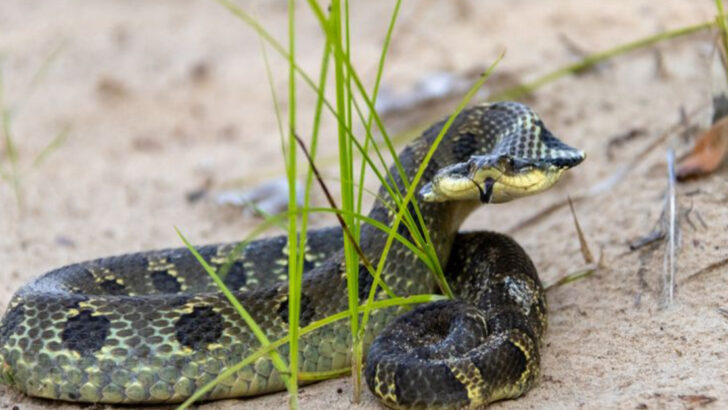Not all snakes are out to get you!
While some people break into a cold sweat at the sight of a slithering serpent, the truth is most snakes are completely harmless. In fact, many are just shy, misunderstood creatures that would rather escape than engage.
From the colorful corn snake to the friendly garter snake, America is home to plenty of non-venomous species that help control pests and keep ecosystems in balance. These snakes won’t chase you, bite you, or ruin your hike—they’re just trying to live their lives in peace.
Ready to meet some of the most harmless reptiles in the country? Let’s take a look at 20 non-venomous snakes that pose zero threat—and might even change the way you feel about these fascinating creatures!
Garter Snake
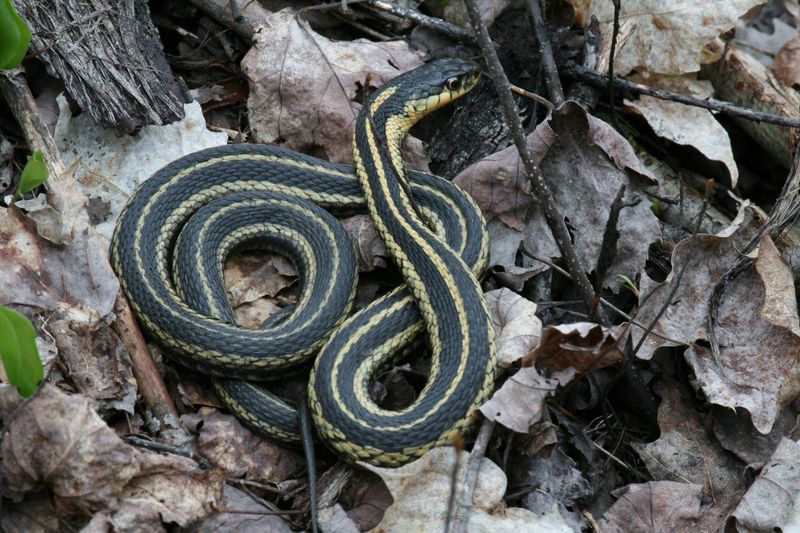
Garter snakes are one of the most common snakes in North America. With their slender bodies and distinctive stripes, they are easily recognizable. These snakes prefer wetland areas, where they hunt for amphibians and insects.
Despite their abundance, garter snakes are shy and non-aggressive. They often retreat when approached, making them unlikely to pose any threat to humans.
Their diet helps control pest populations, providing a natural form of pest management. Observing a garter snake in its natural habitat offers a glimpse into the delicate balance of nature.
Corn Snake
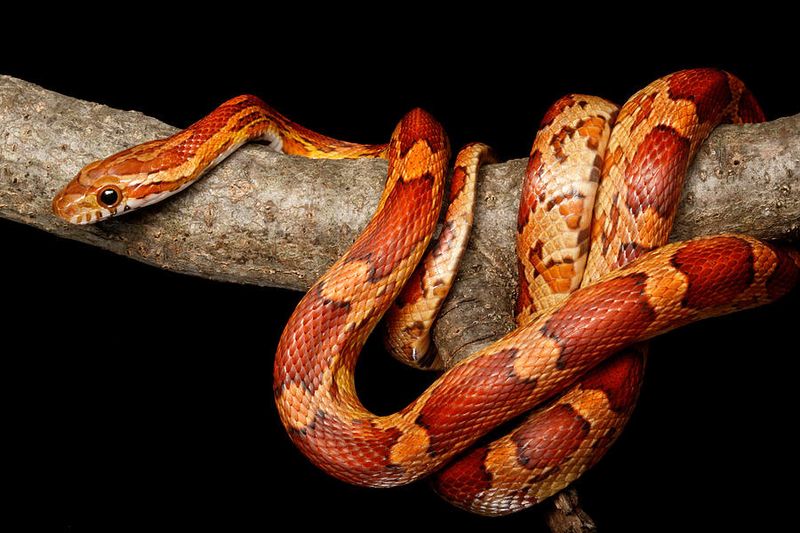
Known for their vibrant colors, corn snakes are a sight to behold. Their beautiful patterns resemble maize, which is how they earned their name.
Gentle and curious by nature, corn snakes are often kept as pets due to their docile temperament. In the wild, they thrive in open fields and forests, where they hunt rodents.
Corn snakes play a crucial role in controlling rodent populations, benefiting both farmers and ecosystems. Their striking appearance and calm demeanor make them a favorite among snake enthusiasts.
Milk Snake
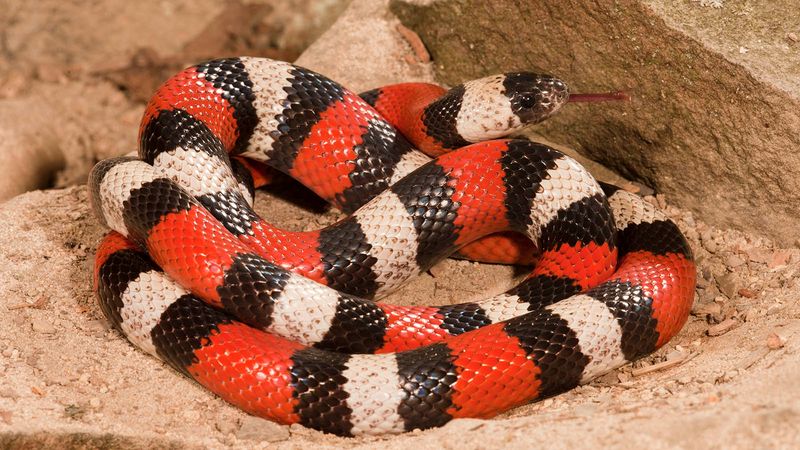
Mistaken often for the venomous coral snake, the milk snake is harmless and fascinating. Its vibrant bands of red, black, and yellow are a natural form of mimicry.
Milk snakes are nocturnal and prefer hiding under rocks or logs during the day. They are found across various habitats, from forests to grasslands.
Their diet consists primarily of rodents and small birds, making them valuable pest controllers in their ecosystems. Despite their bold appearance, milk snakes are gentle and reclusive, posing no threat to humans.
Eastern Hognose Snake
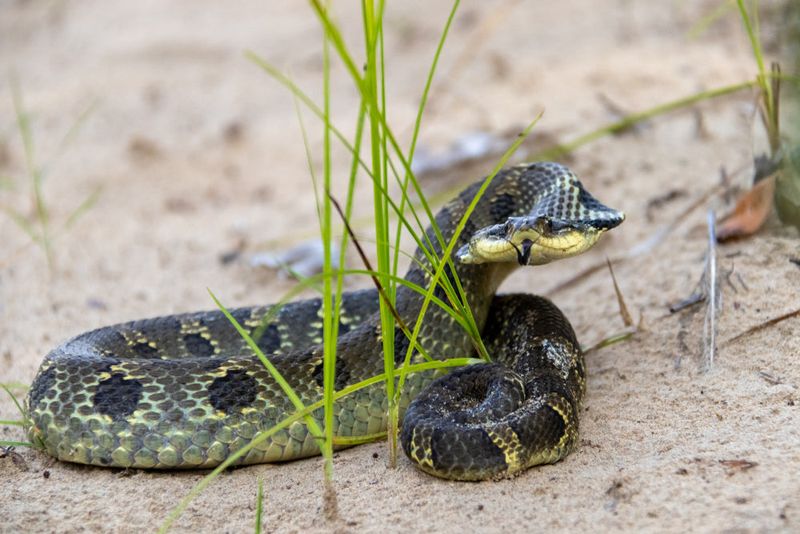
With its playful antics, the Eastern hognose snake is a master of disguise. Known for its ability to play dead, this snake deters predators in the most theatrical way possible.
Its upturned snout is perfect for digging, helping it to hunt for toads and other amphibians. Found in sandy areas and open woodlands, it’s a creature of curiosity.
Despite its dramatic behavior, the hognose snake is completely harmless to humans. It offers a fascinating example of nature’s ingenuity in survival tactics.
Rat Snake
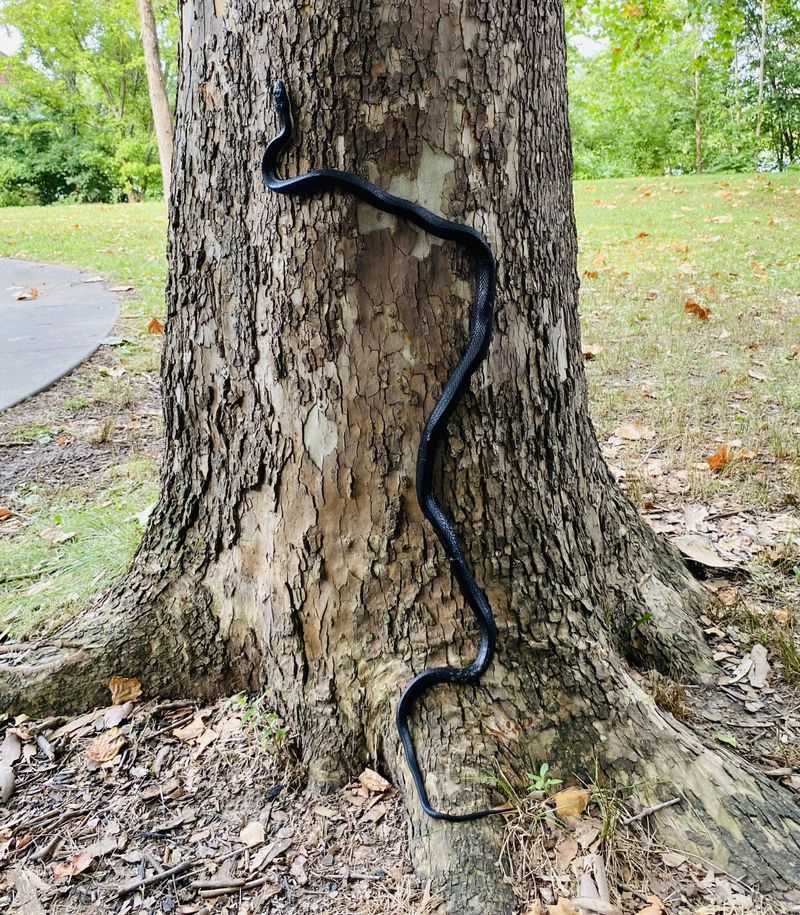
Rat snakes are among the longest snakes in North America, known for their adaptability and climbing skills. Their glossy black scales glisten in the sunlight as they move gracefully through their habitats.
These snakes are often found near farms and rural areas, where they help control rodent populations. Despite their intimidating size, rat snakes are non-aggressive and beneficial to humans.
Their presence in barns and fields is a welcome sight for those looking to keep rodents at bay. Rat snakes are a testament to the balance of nature, working quietly behind the scenes.
Ribbon Snake
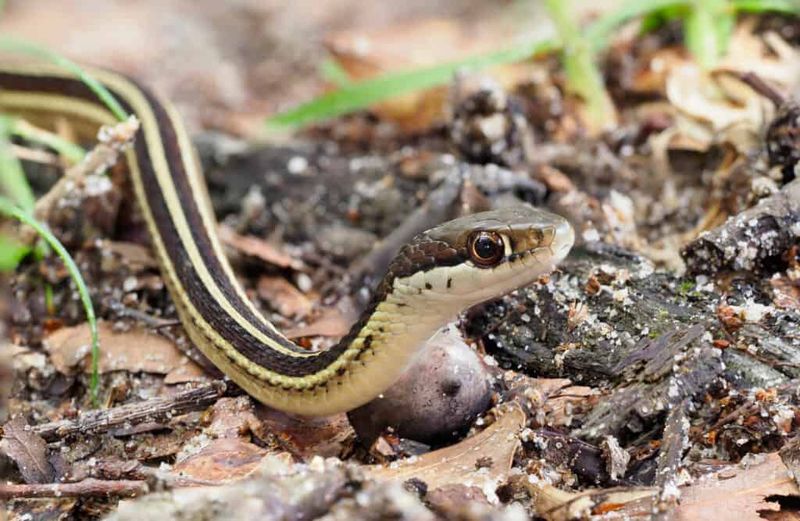
The ribbon snake is a slender, graceful creature often seen near water. With its vivid yellow stripes, it glides effortlessly along the edges of ponds and streams.
Ribbon snakes are fast and agile, feeding mainly on small fish and amphibians. Their presence indicates a healthy aquatic ecosystem.
Though they might dart away at the first sign of danger, ribbon snakes are harmless to humans. Their role in the food chain is vital, keeping aquatic life in balance and contributing to the ecosystem’s diversity.
Ringneck Snake
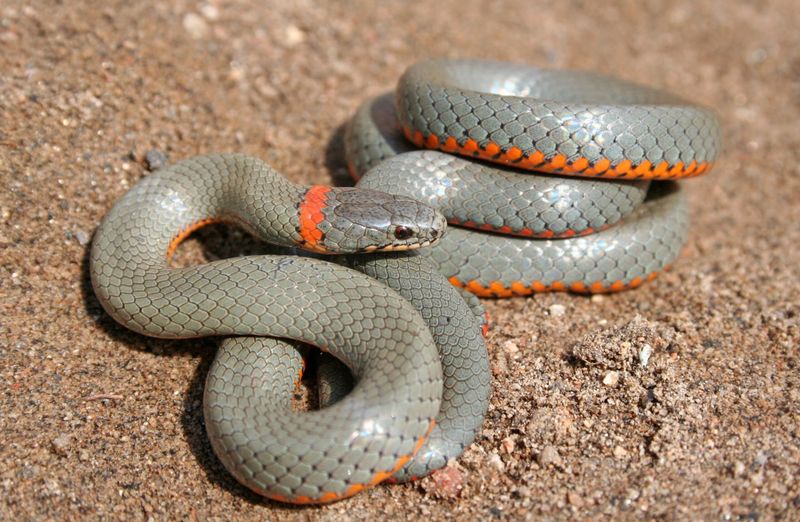
The ringneck snake is a small but captivating creature, easily identified by the bright orange ring around its neck. Its smooth, dark body contrasts beautifully with this vivid marking.
Often hiding under rocks and logs, ringneck snakes are secretive and rarely seen. They feed on insects and small vertebrates, contributing to pest control.
Their shy nature ensures they pose no threat to humans. The delicate beauty of the ringneck snake adds a touch of mystery to the environments they inhabit, making them a delightful discovery for the observant explorer.
Smooth Green Snake

Smooth green snakes are a perfect example of nature’s camouflage. Their bright green hue allows them to blend seamlessly into the foliage of meadows and gardens.
These gentle snakes feed on insects, playing a crucial role in pest management. They are often found basking in the sun, their scales glistening with a jewel-like sheen.
Smooth green snakes are non-aggressive and pose no threat to humans. Their presence is a sign of a healthy environment, where balance and beauty coexist. Observing them in their natural habitat is a rewarding experience for nature lovers.
Northern Water Snake
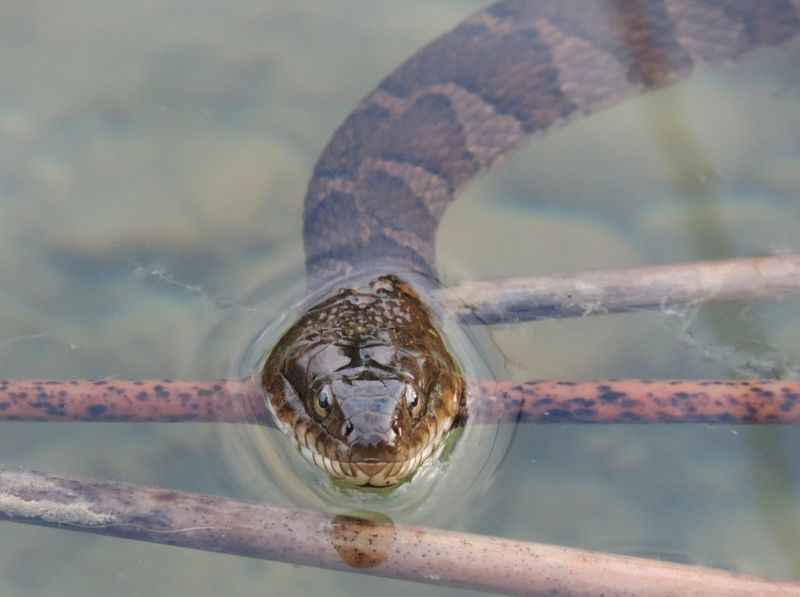
The northern water snake is a common inhabitant of ponds and streams, known for its swimming prowess. Its scales glisten in the water, resembling the ripples of sunlight on the surface.
Feeding on fish and amphibians, northern water snakes play a vital role in their aquatic ecosystems. They are often mistaken for venomous snakes, but they pose no threat to humans.
Watching a northern water snake navigate its watery world is a mesmerizing sight. Their presence is a testament to the rich biodiversity of aquatic habitats, where life thrives in harmony.
DeKay’s Brown Snake

DeKay’s brown snake, with its subtle earth-toned scales, is a master of disguise. Found in gardens and suburban areas, this small snake prefers to stay hidden under leaves and debris.
Feeding on slugs and worms, DeKay’s brown snake is a natural pest controller. Its discreet presence is often unnoticed, but it contributes significantly to maintaining the ecological balance.
This snake is non-aggressive and poses no threat to humans. Its quiet existence in our backyards is a reminder of the intricate connections within our environment, often overlooked yet vital.
Western Ribbon Snake
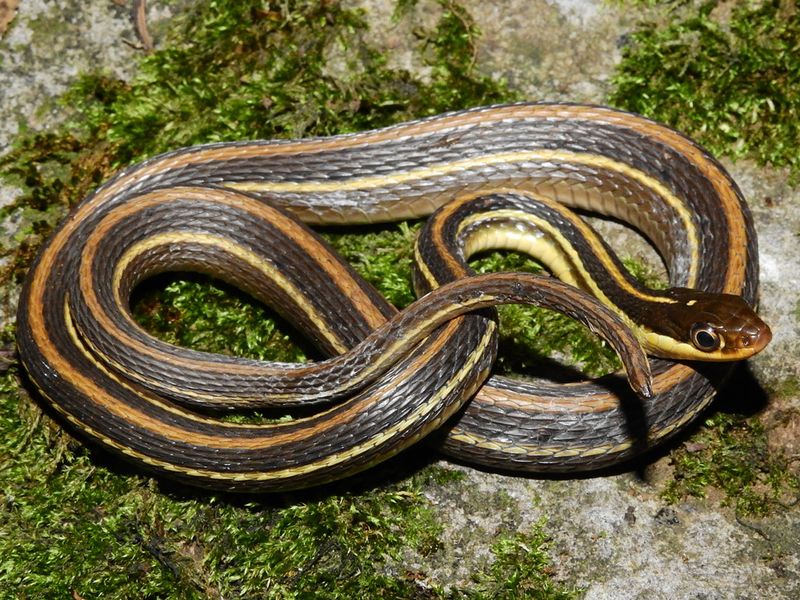
The western ribbon snake is a striking reptile with its vibrant black and orange stripes. Found near water, it thrives in marshes and wetlands, feeding on fish and amphibians.
These snakes are quick and elusive, often seen darting through reeds. Their presence indicates a healthy wetland ecosystem, where life flourishes in abundance.
Despite their speed, western ribbon snakes are harmless to humans. Their captivating patterns and agile movements make them a joy to observe, reflecting the dynamic beauty of the natural world.
Western Hognose Snake
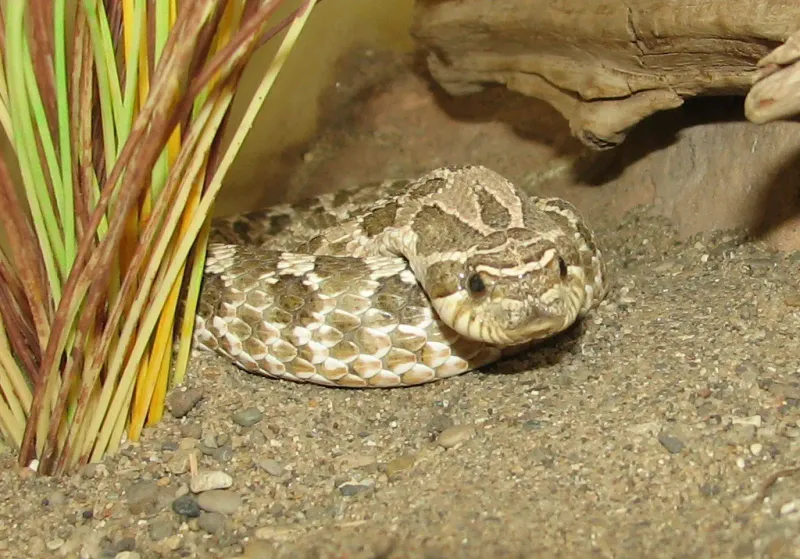
The western hognose snake is a curious creature with a distinct upturned snout. This feature helps them dig and search for prey, primarily toads, in their desert habitats.
Known for their dramatic threat displays, these snakes are all bark and no bite. They hiss and puff themselves up to appear larger but remain harmless.
Found in the arid landscapes of the west, the western hognose snake is a wonderful example of adaptation. Despite their antics, they are completely non-venomous and pose no threat to humans.
Rough Green Snake

The rough green snake is nature’s acrobat, with its slender body and vibrant scales. Found in gardens and forests, it navigates through foliage with grace.
Feeding on insects and spiders, rough green snakes are beneficial for garden health. Their appearance is a delight, with scales that shimmer in the dappled sunlight.
These snakes are shy and non-aggressive, posing no threat to humans. The presence of a rough green snake in a garden is a sign of a thriving ecosystem, where nature’s wonders unfold quietly.
Kirtland’s Snake

Kirtland’s snake is a rare gem among non-venomous snakes, found in wetland habitats. Its reddish-brown scales glisten with an understated elegance, blending into the marshy surroundings.
This elusive snake feeds on earthworms and slugs, contributing to the ecological balance of its environment. Its presence is an indicator of a healthy wetland, where biodiversity thrives.
Though rarely seen, Kirtland’s snake is non-aggressive and poses no threat to humans. Its rarity makes it a coveted sight for herpetologists and nature enthusiasts alike.
Coachwhip Snake

The coachwhip snake is a sleek and speedy reptile, known for its long, whip-like appearance. Found in dry, open areas, it navigates rocky terrain with impressive agility.
These snakes feed on small mammals and birds, playing a crucial role in their ecosystems. Their scales transition from dark brown to tan, resembling a braided whip.
Despite their speed and size, coachwhip snakes are non-venomous and harmless to humans. Their presence is a testament to the adaptability and resourcefulness of nature’s creations.
Eastern Indigo Snake
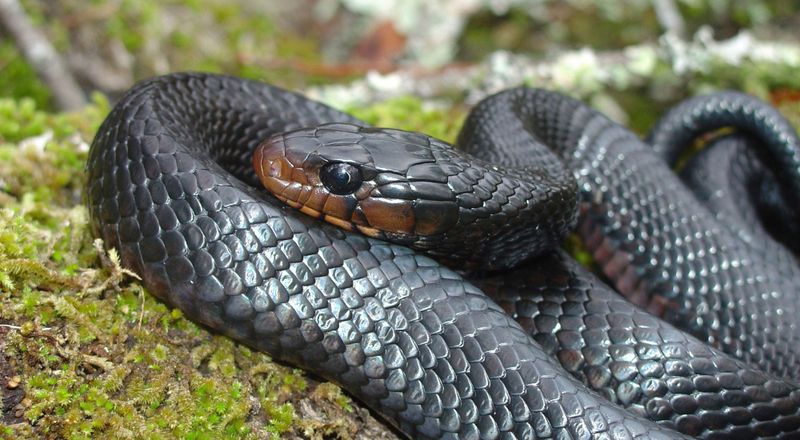
The eastern indigo snake is a majestic presence in the southeastern United States, with its glossy blue-black scales shimmering in the sunlight. It holds the title of the longest native snake in America.
Feeding on a diverse diet that includes other snakes, including venomous species, the indigo snake is an apex predator in its habitat. Despite its formidable size, it is non-venomous and poses no threat to humans.
The indigo snake’s regal appearance and important ecological role make it a cherished species among conservationists and nature lovers.
Prairie Kingsnake
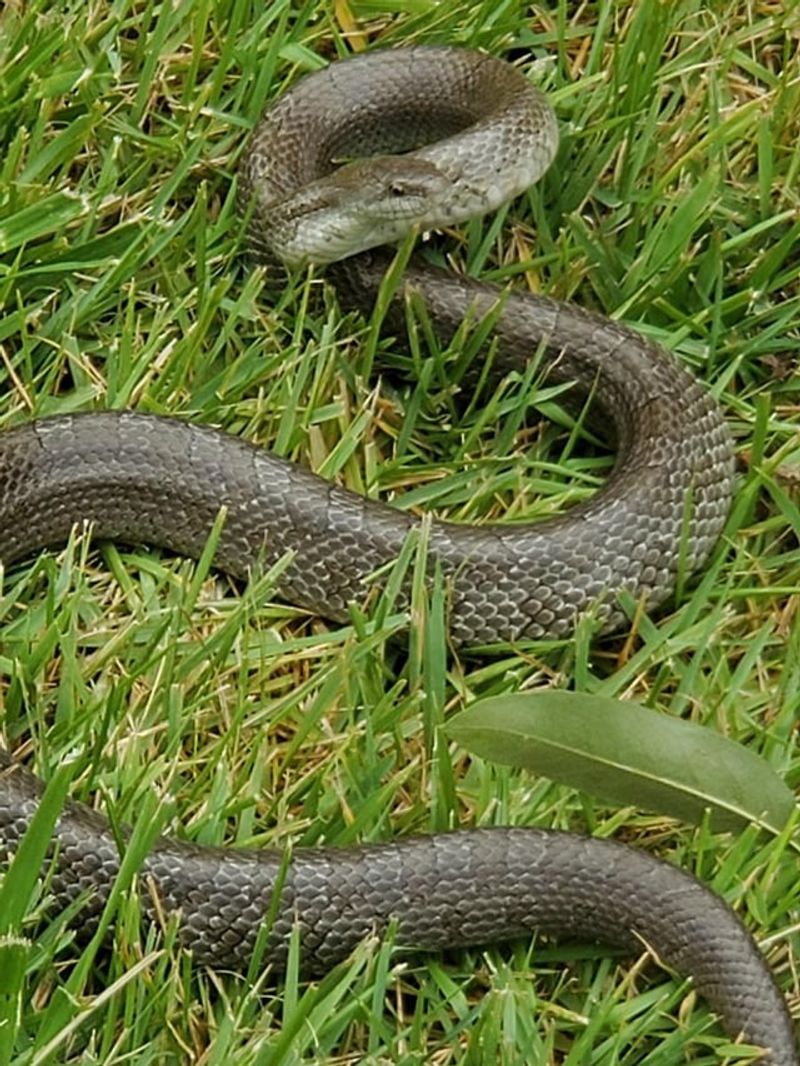
The prairie kingsnake is a resilient reptile, thriving in the grasslands and prairies of America. Its earthy brown scales and subtle patterns allow it to blend into its surroundings effortlessly.
Feeding on rodents and other small animals, prairie kingsnakes are valuable for pest control. Their gentle demeanor and adaptability make them fascinating creatures to observe.
These snakes are non-aggressive and pose no threat to humans. The prairie kingsnake’s presence on the plains is a testament to the intricate connections within these vast ecosystems.
Bullsnake
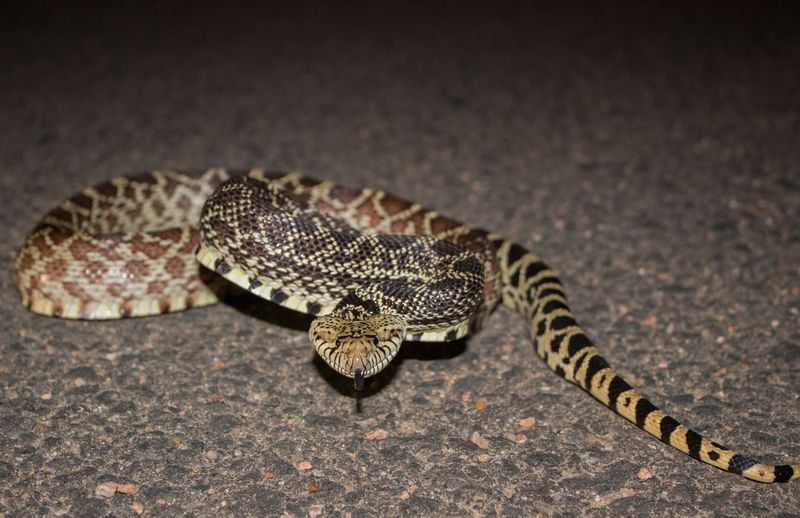
Bullsnakes are formidable yet harmless creatures, known for their impressive size and strength. Their golden brown scales shimmer under the desert sun, casting a formidable presence.
Despite their intimidating appearance, bullsnakes are non-venomous and beneficial for controlling rodent populations in their habitats. Their mimicry of rattlesnake behavior is an effective deterrent against predators.
The bullsnake’s role in the ecosystem is a crucial one, balancing prey populations and maintaining ecological harmony. Observing a bullsnake in its natural environment reveals the beauty of nature’s design.
Plain-bellied Water Snake
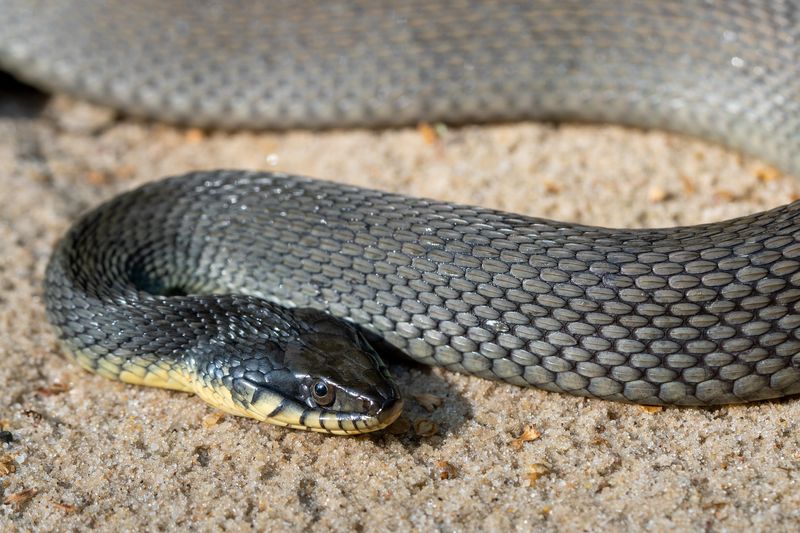
The plain-bellied water snake is an aquatic marvel, often seen gliding through the shallow streams of the southeastern U.S. With its plain, unmarked belly and dark upper scales, it blends with the water’s reflective surface.
Feeding on fish and amphibians, this snake contributes to the aquatic food web’s balance. Despite their proximity to water, they are non-venomous and pose no threat to humans.
Watching a plain-bellied water snake in its habitat offers a glimpse into the serene and vibrant life of aquatic ecosystems, where nature thrives unencumbered.
Rainbow Snake

Imagine a creature that could rival a painter’s palette with its range of vivid colors. The Rainbow Snake, also known as the Eel Moccasin, is a sight to behold with its iridescent scales that shimmer under the sun. Found in the southeastern United States, this snake is a true aquatic artist.
Its slender body glides effortlessly through freshwater habitats, making it a master of stealth and grace. Despite its striking appearance, the Rainbow Snake poses no threat to humans and is quite reclusive in nature. Spotting one in the wild is a rare and memorable event.
Did you know that these snakes are known for their impressive eel-catching skills? Their diet primarily consists of eels, which they hunt with remarkable precision and agility. This fascinating snake embodies beauty and function, serving its ecosystem with elegance.

